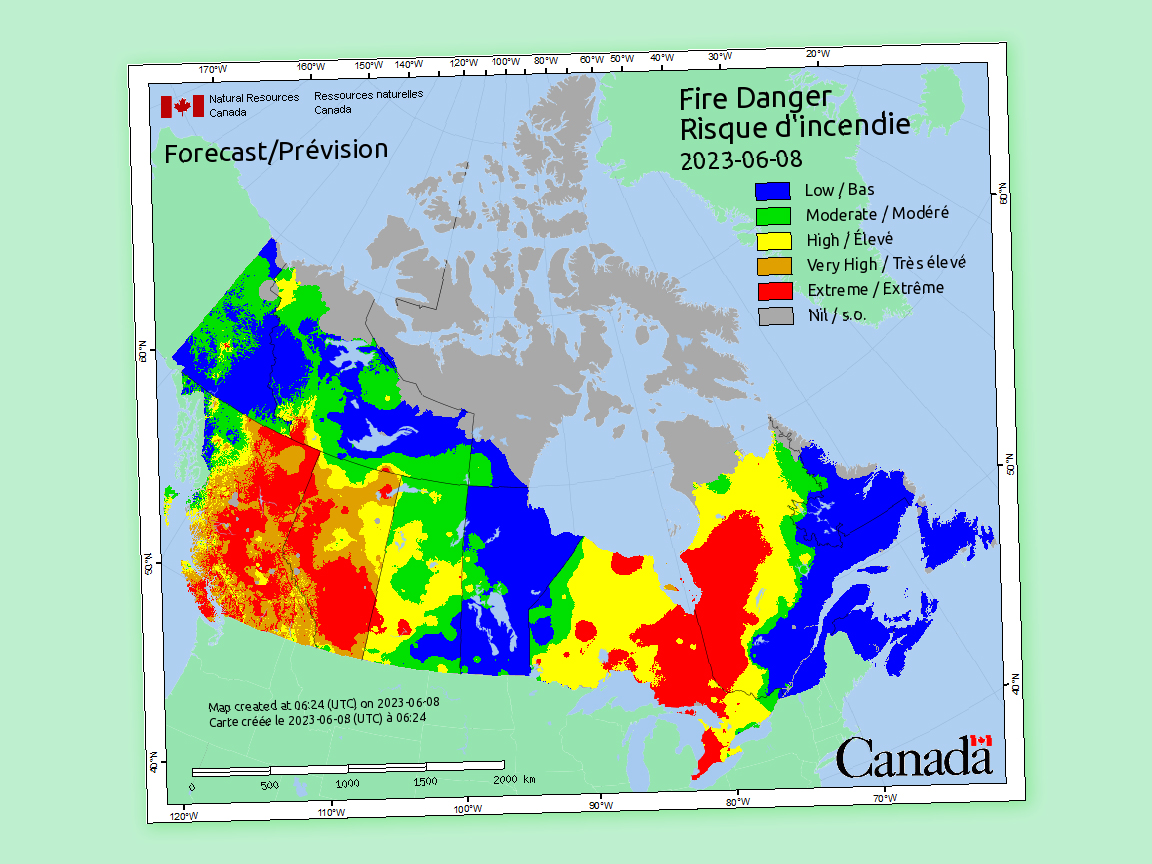
Red Cross in North America helping millions protect against smoke from new Canadian wildfires

By the Climate Centre
Tens of millions of people in North America have been advised to wear face-masks outdoors or simply stay inside because of poor air-quality resulting from continuing major wildfires in eastern Canada.
Media reports today say the worst of the smoke is coming from the eastern province of Quebec, which borders several US states and where 150 fires are burning in what is already said to be its worst wildfire season on record; the US has sent 600 firefighters to help.
The US National Weather Service issued air-quality alerts for virtually the entire Atlantic seaboard, while health officials from Vermont to South Carolina and as far west as Ohio and Kansas warned people against spending time outdoors, Reuters news agency reported.
The American Red Cross yesterday said dry and windy weather has caused wildfires in areas not as familiar with them, urging people to follow the advice of local officials on air quality where they live and work.
“People with asthma, chronic obstructive pulmonary disease, heart disease, who are pregnant, and children and responders are especially at risk,” the society added.
“Breathing in the smoke can cause almost immediate effects such as coughing, trouble breathing, wheezing, asthma attacks, stinging eyes, scratchy throat, runny nose and irritated sinuses, headaches, being tired, chest pain and a fast heartbeat.”
Shelters
The American Red Cross statement included detailed guidance on how to stay safe and protect against wildfire smoke.
The Canadian Red Cross, in coordination with the authorities, has mobilized teams to support the response by opening shelters and relief centres for people forced from their homes.
The Red Cross there is also providing basic necessities like food and clothing; and as the situation develops psychosocial support to help cope with hardship and damage.
The Canadian province of Alberta last month also faced a wildfire emergency, the year’s first, linked to unusually hot, dry weather; a province-wide state of emergency was declared on 6 May amid what the government called “a wildfire season well above average”.
The Canadian military helped with firefighting, as well as airlift, evacuation and heavy-engineering.
The fire-risk map for 8 June from the Canadian government. (Image: Natural Resources Canada)